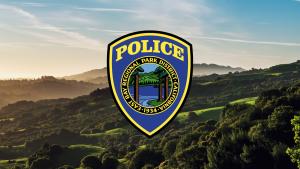Protect Your Home – Ten Things To Do Now
Most of Dawn and Sean Herr’s neighborhood in Paradise, Calif., burned to the ground last November during the Camp Fire, the most destructive fire in state history.
But the Herr house survived. One thing that helped: The Herrs had made sure to create what’s called defensible space, reducing excess vegetation and following the best practices for their area.
Aileen Theile, fire chief for the East Bay Regional Park District, says now is the time to take a hard look at fire safety in your own backyard.
“It’s not just important for one person to do it,” she says. “It’s really important that an entire neighborhood works together. If you find a homeowner who isn’t doing their part, ask why. It could be they’re elderly or disabled, or they don’t have the financial means to help themselves. Then it should become a community effort.”
When tackling your own property, it’s helpful to divide it into two zones. Here’s what to do in 10 easy steps:
ZONE 1 – 30 Feet of Lean, Clean and Green
1. Remove all dead plants, grass, weeds, and overgrown brush.
2. Clear away leaves, needles, and debris from roofs and rain gutters.
3. Keep tree branches 10 feet away from chimney, roof, and other trees.
4. Move firewood and fuel tanks 30 feet away from house.
5. Remove all items from under deck. Do not use this space for storage.
6. Fire harden your home. Install fine wire mesh over roof, eave, and foundation vents.
ZONE 2 — 30 to 100 Feet of Reduced Fuel
7. Mow grass to a maximum of 4 inches. Mow before 10 a.m. and never on a hot, windy, or red-flag day.
8. Create vertical spacing between grass, shrubs, and trees. Trim trees 10 feet from the ground and 6 feet from other plants. Large trees do not need to be removed if the plants beneath them are removed. This eliminates the vertical fire ladder.
9. Create horizontal spacing between trees and shrubs.
10. Plant fire-resistant native plants.
Prepare to Evacuate — 3 Top Tips
Be prepared for the worst. Make a plan today for gathering family members, pets, and valuables in case an approaching wildfire requires evacuation. When an emergency happens, follow these three tips:
• Obey all evacuation orders. Learn different evacuation routes
by vehicle or on foot.
• Do not wait to be told to evacuate. If you feel threatened, leave.
• Do not block the roads for fire engines and emergency personnel.
The East Bay Regional Park District is the largest regional park system in the nation, comprising 73 parks, 55 miles of shoreline, and 1,250 miles of trails for hiking, biking, horseback riding, and nature learning. The Park District receives more than 25 million visits annually throughout Alameda and Contra Costa counties in the San Francisco Bay Area.
Dave Mason, Public Information Supervisor
(925) 482-7078
dmason@ebparks.org






